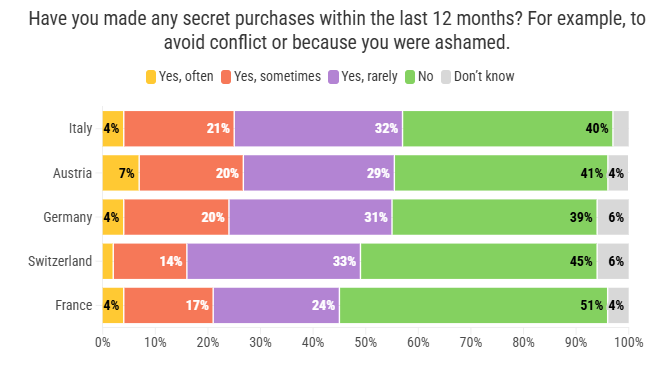
More than four out of five consumers agree that high-value content — detailed descriptions, multiple images and videos, and customer reviews — is more important to them when they’re making a purchasing decision than brand recognition, according to the 2025 Omnichannel Shopping Benchmarks report by product experience management solutions provider Syndigo.
The report, based on a survey of 1,800 consumers in the United States and Canada, found that 85% of shoppers placed more value on content than brand when pulling the trigger on buying a product.
“At the most basic level, access to product content is access to confidence,” said Syndigo CMO Leah Allen.
She explained that when a consumer goes looking for a specific product, like a pair of waterproof hiking boots, they have a set of parameters in mind that any product they purchase needs to meet. They might want waterproof material, a high-grip sole, and ankle support.
“These are product details that they can search for and verify when comparing search results across retailers and brands, and they build trust in individual products based on the amount of information they can gather through research,” Allen told the E-Commerce Times.
“Consumers are telling us that they’re valuing confidence that their purchase will meet their needs over what logo is on it,” she reasoned.
“This is where content like rich media and user-generated content like ratings and reviews become critical,” she continued. “Not only are shoppers looking for the basic details of a product like size, color, and material, but they also want to know in practice that other customers have purchased and successfully used the same product for the same purpose.”
She added that product reviews, user Q&A, and social media content build social proof for prospective customers by adding third-party validation to a brand’s product information, further building trust and giving shoppers the confidence to make a purchasing decision.
Proxy for Touch
Content has become critical for online shoppers, asserted Mark N. Vena, president and principal analyst at SmartTech Research in Las Vegas. “Consumers value product content over brand recognition because online shopping removes the ability to touch or try items, so details, specs, images, and reviews become the stand-in for real-world inspection,” he told the E-Commerce Times.
“When brands and products are marketed well, the brand becomes synonymous with quality, and people gravitate towards the brands they know and trust,” added Rob Enderle, president and principal analyst at the Enderle Group, an advisory services firm, in Bend, Ore.
“When people start disregarding brands, it means that marketing is no longer doing its job and the related brands are bleeding value,” he told E-Commerce Times.
Greg Sterling, co-founder of Near Media, a market research firm in San Francisco, argued that the survey’s findings are slightly misleading. “People are looking for quality and value,” he told the E-Commerce Times. “That may be provided by brands they know, or it may be provided by companies they’ve never heard of.”
“Brands are seen by many as a proxy for quality,” he continued. “But in this economy, consumers are very price sensitive. And brand loyalty has suffered accordingly.”
“But purchase decisions will depend on many things — the item, past experience with a brand, product reviews, and so on,” he said. “There is no blanket rejection of brands versus content. People want to make sure they’re getting the best product for the best price. Content helps them understand that.”
Greater Use of AI
Syndigo also found an uptick in the use of AI tools among shoppers. Nearly half of the consumers in the survey (45%) said they used those tools when researching products, the report noted — a 14-point increase from the 2024 survey results.
“Consumers today care less about brand prestige and more about value,” maintained Gina Gindorf, co-founder of Loya Pay, a financial technology company that combines cashless payments with customer loyalty, in New York City.
“With prices up and endless choices online, shoppers prioritize rich product content and concrete rewards that make a purchase feel worthwhile,” she told the E-Commerce Times. “They trust what they can see — detailed information, real customer experiences, and transparent incentives — over famous logos.”
“The rise of AI product research amplifies this shift,” she said. “If retailers don’t provide clear, structured content and genuine value, AI tools will simply surface better-optimized competitors. Rich media and UGC [user-generated content] help customers feel confident, but both can mislead in the age of AI, so shoppers increasingly look for patterns and proof, not polish.”
Stephanie Harris, CEO and founder of PartnerCentric, a marketing agency in New York City, pointed out that while AI can be an incredible shortcut, it can also flatten nuance.
“It may blend outdated data, summarize opinions out of context, or accidentally over-index on a single source,” she told the E-Commerce Times. “Because AI pulls from everything in the discovery ecosystem — reviews, articles, creator content — any inconsistencies in that ecosystem can snowball quickly. Shoppers should see AI as a starting point, not a final verdict.
Harris advised that because AI is increasingly the first touchpoint in a shopping journey, retailers need to ensure the information it reads is accurate, structured, and widely distributed. “That includes product feeds, comparison data, FAQs, UGC, and the content produced by their partners,” she said. “If this foundation isn’t strong, AI will interpret gaps on its own, which can push shoppers toward competitors before they’ve ever reached your site.”
However, AI can create pitfalls for both consumers and retailers. “AI can beautify anything — literally,” observed Steve Zisk, senior product marketing manager for Redpoint Global, a global customer data platform and engagement strategy provider.
“So if the media comes across too perfect, the shoppers risk believing an idealized version of the product that overshoots the baseline of realistic expectation,” he told the E-Commerce Times. “When that glaring gap between the image and reality happens, retailers see a spike in consumers sending the items back for refunds.”
Beyond product research and AI tools, social content also influences shoppers’ final decisions.
Importance of Social Content
Syndigo also found that peer-to-peer content can play a decisive role in purchasing decisions. User-generated content builds trust, it noted. “Too few customer reviews” was cited as one of the top reasons a shopper will leave a product page without making a purchase. And 77% of shoppers say customer ratings, reviews, and user-submitted content persuaded them to buy something they didn’t think they needed.
Andre Inverdale, founder and managing consultant at the Ardinal Strategy Group, a management consulting firm in Atlanta, maintained that user-generated content (UGC) is one of the most powerful drivers of product content strategy across social media.
“It accelerates and deepens brand connection with target consumers who value a point of view from the everyday users,” he told the E-Commerce Times. “In most cases, it drives more value in the eyes of shoppers than a brand’s own content.”
“Consumers trust information from other consumers, not logos,” added Michael Fester, CTO and co-founder of 14.ai, a maker of customer support automation tools, in San Francisco.
“If the product content is made in a way that answers their questions while showcasing the benefits of the product, this establishes more trust, consumer-to-consumer, rather than brand-to-consumer,” he told the E-Commerce Times. “In the age of TikTok Shop and new brands going viral every day, consumers put more emphasis on perceived product quality and transparency rather than legacy brands.”
In the face of decreased reliance on brand recognition, he advised retailers to treat their product pages like mini sales reps, with clear product information that addresses consumer objections upfront. “Customer support is also becoming a major conversion lever,” he said. “Chatbots and AI assistants should provide immediate and accurate product-specific answers to help move consumers towards checkout.”
However, Abel Disla, founder and CEO of Domepeace, an online retailer of grooming and scalp-care products, pointed out that user-generated content has its own landmines. “Shoppers should know when creators are being paid or receiving product and treat claims accordingly,” he told the E-Commerce Times. “Brands should label those relationships clearly, avoid burying negative experiences, and resist the urge to sanitize every review.”
“The worst mistake I see is treating customer content as pure promotion,” he said. “The best retailers read it like a live focus group, feed those insights back into product tweaks, rewrite confusing copy, adjust expectations, and turn that loop into the real engine of loyalty.”
The biggest misstep brands fall into with UGC is overdoing it, added Robert Khachatryan, CEO of Freight Right, a freight forwarding and logistics company in La Crescenta, Calif.
UGC was novel and interesting pre-Covid, but five, almost six years on, it’s expected and, like most trends, it gets played out, he told the E-Commerce Times.
The consumer, now, sees every brand, name brand or upstart, using UGC and is desensitized to it, he maintained. The novelty and newness of it are gone, and consumers are beginning to see content-forward ads as flat and gray as regular mass media advertisements.





